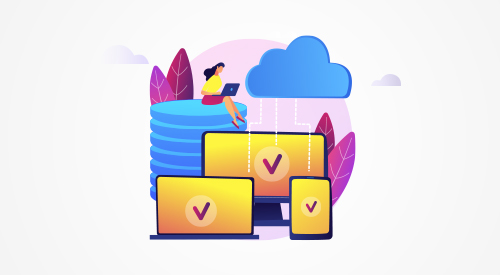

According to a study, up to 30% of cloud spend is wasted due to idle or underutilized resources! However, effectively managing cloud infrastructure is essential to prevent cost overruns that can negate the benefits of cloud adoption. This blog explores CloudOps, a collection of tools, processes, and best practices derived from DevOps principles, which helps businesses to optimize their operations and save big bucks!
Reduce Cloud Costs with Niveus
The Cloud Cost Challenge
The inherent scalability of cloud services presents a double-edged sword. While it allows businesses to dynamically adjust resources based on demand, cloud environments also pose the risk of incurring unnecessary costs if left unchecked. Here are some common reasons why cloud deployments can become cost-inefficient:
-
-
- Idle Resources: Leaving underutilized cloud resources running unnecessarily leads to wasted expenditure.
-
- Improper Instance Selection: Selecting cloud instances with more processing power or storage than required can significantly inflate costs.
- Lack of Cost Monitoring: Without proper cloud cost monitoring tools and practices, it becomes difficult to identify cost inefficiencies and potential areas for optimization.
-
Unoptimized cloud costs can significantly impact a business’s bottom line. By implementing effective CloudOps solutions, you can gain control over your cloud spending and ensure your cloud environment is cost-effective and sustainable in the long run.
CloudOps Strategies for Cost Optimization
As businesses grow on cloud, it becomes imperative to use the right tips and tricks to make the most of their investment. Here are some specific CloudOps strategies that can help you optimize your cloud costs:
Resource Optimization
-
-
- Rightsizing Instances: Regularly evaluate your cloud workloads and tailor cloud resources to their specific requirements. By selecting the most appropriate instance types, you can significantly reduce cloud spending.
-
- Autoscaling: Leverage autoscaling features offered by cloud providers. Autoscaling automatically adjusts cloud resources up or down based on real-time workload demands. This ensures you only pay for the resources you actually use.
-
- Reserved Instances (RIs): For predictable workloads, consider utilizing Reserved Instances (RIs). RIs offer significant cost savings compared to on-demand pricing models, provided your resource utilization remains consistent over a predefined period.
- Spot Instances: Spot Instances are a cost-effective option for workloads that are fault-tolerant and can handle interruptions. Spot Instances are unused instances offered by cloud providers at significantly lower prices. However, be aware that spot instances can be interrupted when the cloud provider requires the underlying resources.
-
Cost Monitoring and Visibility
-
-
- Importance of Cloud Cost Monitoring Tools: Utilize cloud cost monitoring tools to gain comprehensive visibility into your cloud spending. These tools provide detailed cost breakdowns by resource, department, or project, enabling you to identify cost anomalies and potential areas for optimization.
-
- Cost Allocation and Tagging: Implement a tagging strategy to categorize your cloud resources based on department, project, or application. This facilitates cost allocation and enables you to track spending for different cost centers within your organization.
- Setting Cost Budgets and Alerts: Establish cloud cost budgets and configure alerts to notify you when spending exceeds predefined thresholds. This proactive approach allows you to identify potential cost overruns early on and take corrective measures.
-
Cloud-Specific Optimization Techniques
-
-
- Storage Optimization: Develop a storage optimization strategy based on data access frequency and type. Utilize storage classes offered by cloud providers that are tailored for different data access patterns (e.g., frequent access vs. archival data) to optimize storage costs.
-
- Network Optimization: Explore techniques for optimizing network traffic costs, such as utilizing private connections between your on-premises infrastructure and the cloud to reduce reliance on public internet egress charges.
- Optimizing Software Licensing: Regularly review and optimize your cloud software licenses to ensure you are only paying for the software features and functionalities your organization actually utilizes.
-
CloudOps Tools for Cost Management
Managing a cost-efficient cloud environment requires the right set of tools. Here’s an overview of different CloudOps tools designed to help you optimize cloud costs:
-
-
- Cloud Cost Monitoring Tools : These tools provide real-time insights into your cloud spending, offering detailed cost breakdowns, anomaly detection, and cost forecasting capabilities.
-
- Resource Optimization Tools : These tools analyze your cloud resource utilization and offer recommendations for rightsizing instances, identifying idle resources, and leveraging cost-saving options like Reserved Instances or Spot Instances.
- Cloud Billing and Chargeback Tools: These tools simplify cloud billing by integrating with various cloud providers and offering features like automated cost allocation, chargeback reports for different departments or projects, and expense forecasting.
-
Consider incorporating a cloud management platform (CMP) like Nephon to streamline your CloudOps efforts.
Nephon is a comprehensive Cloud Management Platform designed to empower businesses with centralized control and clear cost insights. Through a unified dashboard, Nephon simplifies resource management across all your cloud providers. Gain real-time visibility into your cloud spending with Nephon’s insightful analytics, allowing you to identify cost optimization opportunities and eliminate inefficiencies.
Nephon Optimizes Your Cloud Investment
Nephon goes beyond cost visibility. Its automated tools ensure effective cost management. Additionally, Nephon simplifies cloud costing!
Nephon, Alongside Proven CloudOps Strategies
By integrating Nephon with the CloudOps strategies, you can unlock a new level of control over your cloud environment. Nephon empowers you to optimize costs, streamline operations, and maximize the value of your cloud investments.
Best Practices for Cloud Cost Optimization
Here are some key best practices to follow for effective cloud cost optimization:
-
-
- Establish a Clear Cloud Cost Management Strategy: Develop a comprehensive cloud cost management strategy that aligns with your organization’s overall cloud goals and objectives. This strategy should define roles and responsibilities, establish cost control measures, and outline procedures for ongoing cost optimization.
-
- Foster a Culture of Cost Awareness: Promote a culture of cost awareness among all cloud users within your organization. Educate them on cloud pricing models, best practices for resource utilization, and the importance of cost optimization.
-
- Automate Cost Optimization Processes: Automate as many cost optimization processes as possible. This could include autoscaling configurations, scheduled instance rightsizing, and automated alerts for cost anomalies.
-
- Regularly Review and Refine Cloud Resource Allocation: Continuously monitor and analyze your cloud resource allocation. Regularly review workload demands and adjust resource allocation accordingly to eliminate waste and optimize cloud spending.
- Continuously Monitor and Analyze Cloud Costs: Establish a routine for monitoring and analyzing your cloud costs. Leverage cost reports and insights from your CloudOps tools to identify trends, potential cost leaks, and opportunities for further optimization.
-
By implementing these best practices and leveraging CloudOps strategies and tools, you can achieve significant cost savings and ensure your cloud environment operates in a sustainable and cost-effective manner.
Conclusion – Save The Big Bucks
CloudOps strategies offer a powerful approach to optimizing cloud costs and promoting cloud sustainability. By implementing the strategies and tools outlined in this guide, you can gain control over your cloud spending, eliminate inefficiencies, and ensure your cloud environment delivers maximum value for your organization. Take charge of your cloud costs today and unlock a more sustainable and cost-efficient cloud future!
Gain comprehensive cloud management With Niveus











